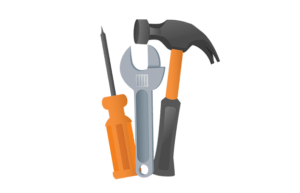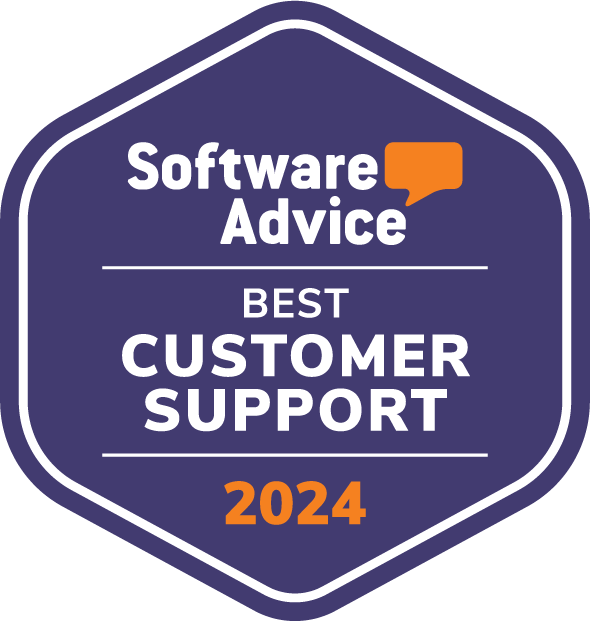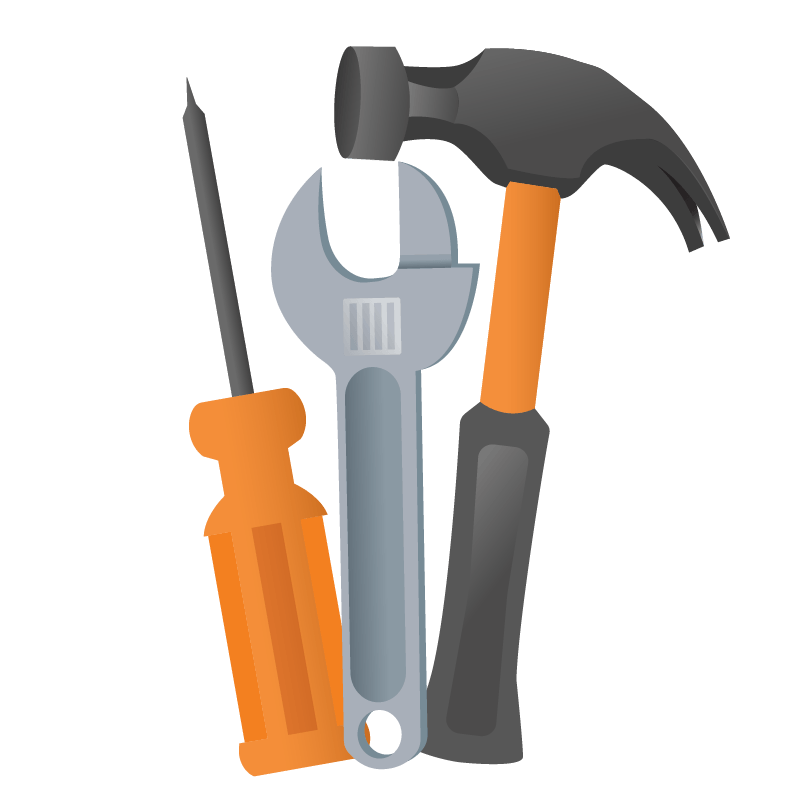1. What is business productivity?

First of all, what is business productivity? The term refers to the division between the amount of work output and cost input. Basically, for a field service business, it can refer to the number of jobs divided by the total cost that went into closing them.
A high number of finished jobs with a low cost means that your business is profiting. Consequently, having a low number of jobs per month but high costs will mean that more money is going in than coming out.
Many people think productivity and efficiency are interchangeable. The truth of the matter is that efficiency differs from productivity. The latter is a comparison between what has been produced together with the cost of producing it and what could ideally be produced and at what cost.
Imagine you’re looking at two plumbing & heating businesses. Business A has 15 technicians and Business B has 30. You’d expect that if Business A can finish 500 jobs in a month, Business B would be able to finish 1000. But the fact is that if Business B suffers from productivity issues, it will end up doing 500 jobs too.
Yet they will have to pay for double the number of employees and the resources they require. Business A, however, can always continue to improve their productivity and even overtake Business B when it comes to how many jobs they can finish in a month.
More often than not, low productivity is a management issue. The most important thing is acknowledging it and having a proactive attitude about it. It all comes down to proper labor division and resource allocation. But more about that in a second! First, we have to understand the full impact of a low productivity rate.
2. Why should you increase productivity?

We’ve established that productivity is important for your bottom line. You can’t make a profit if more money is going in than coming out. But a whole host of issues can follow low productivity. Start with the fact that your business cannot move forward if you never reach a point where profits exceed costs.
Healthy, scalable growth – the kind that can be sustained and resist changes in the marketplace – only comes with good productivity rates. You need to make the most out of your available resources.
It’s also important to acknowledge that resources can refer to a number of things. It can mean office employees, technicians, digital tools, trucks as well as the actual inventory that you might keep in storage.
Even the storage space itself. These are your tangible resources. Intangible ones are the level of experience and skills your technicians have or your office admin’s ability to schedule a high number of jobs in a set amount of time.
Simply breaking even at the end of the month is not succeeding, it’s surviving.
Healthy, scalable growth – the kind that can be sustained and resist changes in the marketplace – only comes with good productivity rates. You need to make the most out of your available resources.
It’s also important to acknowledge that resources can refer to a number of things.
This can mean office employees, technicians, digital tools, trucks as well as the actual inventory that you might keep in storage. These are your tangible resources. Intangible ones are the level of experience and skills your technicians have or your office admin’s ability to schedule a high number of jobs in a set amount of time.
Going back to the story of Business A and Business B, it’s easier to understand now that perhaps the former has a better admin strategy and they are able to make better use of their 15 technicians than the latter.
If Business B isn’t able to track its vans and simply sends a random technician to do a job, it means that there might have been someone closer to the worksite who did not have to waste an hour or two of billable time simply to get there.
At the end of the day and especially when the time comes to crunch the numbers, this all ads up. The result gets deducted straight from your profit margin. This is the cost of low productivity in your field service business.
READ MORE: How to Go Paperless with Field Service Tracking Software
Now that we’ve settled that, how do you increase productivity? We’ll break it down for you so read on and improve your business strategy with these productivity hacks!
3. Digitalize, digitalize, digitalize

We’re not pointing fingers here but probably the largest productivity black hole in the field service industry is continuing to rely on paper-based processes. From scheduling jobs using notebooks to keeping track of inventory and spare parts on check in/check out sheets, paperwork has kept many good companies from becoming great.
However, when you do decide to go digital, it’s important to have a process in mind. This way, you can observe your results and decide if the investment was worth it. Your business is made up of a few operations and plumbing & heating is only a small part of it. You need to identify the pain points and tackle each with a digital solution.
According to Stacy Caprio, business coach:
Productivity is more about having a system in place and carefully following procedure than it is about having happy thoughts or trying to think yourself into a productive mode.
As long as you know what you are there to do and have a clear procedure to follow, you’ll be in and out more quickly than if you go in and wing it.
Keep on reading to see what your field service business needs to make it to the next level:
Scheduling
Let’s start with scheduling jobs – the bread and butter of many field service companies.
Your current process is probably something like this: a customer calls, your office admin takes their query, uses her knowledge of the technicians to select one, schedules him either in a notebook or a spreadsheet then lets the technician know.
As you probably realize, this sounds neat in theory but in practice, it can get messy very fast. As soon as you’re out of the “small business” phase and looking to grow, more customers will start calling in.
This will overwhelm your office admin and force you to hire more staff just when you were getting ready to grow. After all, an office manager can usually handle 15-20 techs per day and even that’s stretching it.
The more overwhelmed they are, the more error-prone they become. Now, increasing the number of people on your team is perfect but, ideally, you’d increase the profits first.
Not to mention that in an era when customers are used to signing contracts on devices, getting updates on SMS, and receiving receipts via email, messy paper documents and inefficient business practices can make your company look behind the times.
Fortunately, scheduling is the kind of repetitive task that automation will replace completely. A good job management software will record your technicians, their individual skills, their truck location, as well as the tools and spare parts that they keep with them. Then it will use this information to assign the appropriate individual who closest to the worksite.
This is the power of intelligent scheduling.
Payments
Payments are always a big source of friction for any business. Just think of how many invoices you’ve had to wait for or how many debts you’ve had to chase. Having to juggle payments that don’t come through on time reflects on your productivity levels and strains your budget planning. This is no way to increase productivity.
We’ve asked Jullian – Luc Barber, Coordinator of Business Development at SumUp, the payment solutions experts, to give us a few tips on how to introduce mobile payments to field service businesses.
“Old-style PDQ machines (also known as the point of sale terminals or credit card terminals) are still around in many businesses, but they have disadvantages: they require a dedicated phone line, they can take payments only in one physical location, and PDQ companies often hit businesses with non-transparent fees like commissions per transaction.
These solutions don’t match the needs of today’s small businesses. And certainly not field service businesses, where customers aren’t coming into your business office to pay. Luckily, SMEs can now accept card payments anywhere they like, thanks to mobile payment providers.
Instead of using a traditional fixed-line traditional terminal, this technology works using your smartphone as the base. All your technicians or office staff need to do is to enter the cardholder’s details into the app and the debit or credit card payment is processed. As long as the cardholder has sufficient funds their card issuer will release the money, just like a conventional payment terminal.
Using a mobile card payment system means upgrading to twenty-first-century technology. Today’s consumers are accustomed to being able to order anything they want online at any time that suits them. They’re also used to being able to pay from anywhere they happen to be.
Given that consumers now expect this level of flexibility with payments, offering a mobile card transaction service makes sense for any business that doesn’t use a conventional cash register system. Anyone who offers mobile services, like electricians, plumbers, HVAC companies, and window cleaners, can obtain payment from their customers in their own homes without having to rely on checks or cash.”
Try our Paperless Savings Calculator
Not to mention the security aspect. Any field service business knows that debt chasing is expensive and troublesome. But with job management software like Commusoft, you can take credit card details prior to the job which ensures that customers can’t refuse payment after the work is finished.
While digital payments are standard in large businesses, some people are positively surprised when a smaller business uses one. This is a great opportunity to get more online reviews too. Make customers aware of your new functionality by promoting it on your website and social media.
Estimates & Invoices
Paper-based estimates and invoices are such an issue in the field service industry that we didn’t want to stick them as a quick note in the “Payments” section. There’s no need for us to tell you how finicky these can be.
In the absence of a job management software or any other digital strategy, the whole process of getting an estimate to a customer, getting it approved then informing and scheduling an engineer who may or may not find the estimate correct is a hassle. And we’re not even at the invoice stage – which can often be forgotten by overwhelmed office admins.
This whole process can easily derail your productivity plans and seriously influence how accurate your budgeting is.
Automating your invoicing process ensures that regardless of the current workload, all your jobs are neatly recorded and filed. Afterwards, customers will receive the correct bill. Since your technicians will be adding the parts they used on a work-site immediately after, you can rest assured that no expense will slip through.
Learn more about invoicing software!
The sheer amount of time you’ll be saving will increase productivity significantly without even accounting for your peace of mind – which is priceless.
Inventory Management
A digitalized inventory is key to increasing your business productivity. The more you grow as a business, the more assets like trucks and spare parts you’ll accumulate. Especially when it becomes financially feasible to order parts in bulk. These all have to have tracking and it’s easy to fall into the trap of thinking that paper-based systems will be a good way of organizing things.
In an ideal world, every time a technician takes a spare part out of storage, he signs a check-out sheet. If in the end, the job did not require that part, he comes back at the end of the day, puts it back into storage then signs a check-in sheet again.
Except when does this actually happen? More often than not, technicians take out more parts than they need. Then they forget about check-out sheets or fill them in illegibly. And if they don’t use said parts, they will more often than not stash them in the back of the truck.
Consequently, your admin staff will see them as missing and mark them as out of stock for future technicians who, in turn, won’t be able to complete a job. Then they’ll order the parts again, adding an extra expense to your already stretched budget.
Field service inventory management software can help your team manage your stock and put an end to these struggles. You will be able to scan in parts, technicians than can check them in and out using a mobile device, while admin staff will be relieved to know that everything is properly recorded now.
In addition to increased productivity and hours saved tracking lost items and records, you will be able to order parts more efficiently and avoid having all your capital tied up in stock.
Locating your technicians
Many technicians have a strong work ethic and they can be relied on to do their job. But there will always be a bad apple or two and these can seriously affect your productivity. Imagine you’re trying to calculate the number of miles your technicians drove during a month and compare it to fuel consumption and hours recorded as “on the road”.
In the end, you notice that the numbers don’t add up. More often than not, it’s technicians using trucks for personal errands. They might be taking unnecessary detours before attending to jobs which can quickly spiral down into late arrivals, unhappy customers, and negative reviews.
Read More: 4 Expert Productivity Tips for Field Service Technicians
Think you can’t afford to implement real-time GPS tracking? Consider what it costs your business if you don’t track your engineers.
Let’s say your field service business has nine technicians and they work 45 weeks in a year. If these statistics hold true, three of your field service technicians are saying they’re working when they’re actually not. If each of them takes just two extra hours off per 40-hour work week and you pay $20 per hour, you’re losing $5,400 per year in wasted wages alone.
That doesn’t account for the opportunity cost of missing out on jobs because those technicians aren’t fitting as many jobs into the day as they can. Add thousands more in fuel costs onto that if those technicians are using your service trucks to do side jobs on the sly.
Tracking software can easily fix this situation. You’ll always be in the loop on whether your trucks are where they’re supposed to be. This works into the intelligent schedule feature we mentioned earlier since it allows either your admin or a job management software to select the technician that’s closest to the worksite.
This way, you can save on fuel costs too! Not to mention that many insurance companies offer discounts to businesses that employ tracking for their assets. With over 25 years of industry experience behind him, Alex Berezowski, owner of the foundation repair and replacement company, The Foundation Experts, attests to it:
We have equipped all of our new heavy equipment and trucks with all the latest tracking technology, which helps us track and manage our employees and equipment in real-time 24/7. This solution helps us better understand how employees are using their time, as well as the rates of production.
Communicate via mobile
52.2% of all web traffic in 2018 was generated by mobile devices. So it’s only natural that your employees use the medium that they’re most accustomed to. Same goes for your customers. You can increase productivity and streamline your job process by keeping everyone in the loop on their mobiles.
You can track technicians using the aforementioned location features. Also, you can always notify them of any changes. Customers will know exactly when they’re supposed to arrive. This way, you avoid tardiness and jobs where your team arrives and there’s no one home to open the door.
4. Hire smart then treat them well!

Now that we’ve run down all the areas where you can improve by going digital, let’s have a look at your team itself. Since you can’t exactly hire robots to fix a leaky pipe at the moment, your team is your most important asset.
Keep in mind that by “team” we’re not just referring to technicians. Office managers, marketers and salespeople can impact productivity just as much as anyone else. Workforce and its culture define a diverse, well-rounded company. Everyone knows that happy employees are more productive.
If all you’re hearing when you’re reading this is the sound of coins rattling out of your profit margin, then hear us out. When it comes to employee well-being, money is almost never the problem. Most workplace woes come from a negative culture (think to exaggerate competitiveness, hard criticism as opposed to constructive, etc.) and lack of opportunities to develop.
The real business productivity killer that you need to be wary of isn’t Facebook or any other procrastination device. It’s low employee retention rates that put a business in the ground. If you spend more time hiring people than actually working with them, you need to take a cold hard look at the reasons why they’re leaving you so soon.
But we’ll get there in second. For now, let’s start from the beginning of the process:
Field Service Recruitment strategy
It all starts with your hiring mentality. Bringing on fresh, highly skilled talent can help your business grow and thrive. The bad news is that attracting good technicians is no longer a simple matter of placing a job ad in the local newspaper or throwing one online.
With a national shortage of skilled labor, you really have to be smart about who you employ. Especially if you’re a growing business that can’t afford to throw money around like a multinational. If you’re not the biggest, you need to be the smartest and most creative.
When you’re aiming to increase both your productivity AND your employee retention rate, you need to change your mentality from “how can I hire cheap” to “how can I hire long-term”. Good employees, technicians or not, will more than pay for themselves.
Even if you’re not able to pay them as much as a competitor, experts say that there are many aspects that candidates will take into account when choosing their employer. Significant benefits like industry training and insurance will definitely sway people looking for a long-term commitment, while Pizza Fridays or coffee gift cards will go a long way towards creating a good relationship.
Keep in mind when you’re advertising for a position that you need to state these benefits. Talk about what you’re offering just as clearly as about what you’re asking for. This way, candidates will know that they’re looking at a company where they have a future in.
The Interview
Interviewing a candidate for a position in a field service business sounds easy. But it can actually be quite tricky if you don’t know what to look for. It’s hard to tell who is the most productive one before you actually work with them but there are some telltale signs like they’re one or more of the following:
- Goal-driven
- Work well in a team
- Refer back to using personal systems to organize their work
- Deal well with the unexpected
- Don’t multitask
- Know when and how to ask for help
All these are characteristics of productive employees, according to Inc. expert, Jeff Haden. Of course, their skills and experience will be your top priority but always remember that skills can be taught and experience earned, but a bad apple can’t be brought back to health. And you know what bad apples do to the barrel.
A clear red flag to watch out for is a history of job hopping, where a candidate has had multiple jobs in a short amount of time (2-3 in less than 6 months). Sure, there might be an explanation for this like freelancing contracts or short-term projects so don’t be in a rush to hit reject before hearing them out. But if a candidate’s past 5 employers were all suspiciously evil, then it’s time to ask for some solid references.
Read more: Complete List of Most Common Field Technician Interview Questions
During an interview, keep in mind that a humble attitude and a genuine desire to learn are the best signs of a productive employee that will work well with others and take responsibility.
Ruth King, an entrepreneur, and expert field service business consultant, mentions that “a big productivity leak is employees getting stuck on a job due to technical issues or insufficient knowledge. These employees often won’t ask for help for hours which costs the company money.”
One last thing to remember when you’re recruiting: strive to advertise and hire women! And not just in the office. Sure, it’s easier said than done since male technicians still vastly outnumber female ones but if you do get the chance, don’t dismiss women as inexperienced or a poor fit for the work environment.
Keep in mind that, statistically speaking, they have better attention to detail and rank much higher in empathy – two things that will make dealing with customers a lot easier. Additionally, women who live alone are very nervous when it comes to letting men into their homes for jobs therefore having a female technician on board will be a big advantage.
Keep your employees engaged
After you’ve hired your dream team, you need to do your best to retain it. Fortunately, a good work environment comes down mostly to smart management. As long as you keep employee wellness in mind when making business decisions and involve people in the ones that will affect them most, it’s pretty difficult to make a wrong move.
People remain loyal to companies that provide them with meaning. The promise of professional and personal growth is always a big motivating factor. So is the knowledge that an individual’s work benefits the whole company. This makes employees feel valued and leads to intrinsic motivation – which is key to boosting productivity.
Challenge your employees by providing them with training (admins will always appreciate a new and updated software!) and events. Managers who are afraid of training their employees have never heard the dialogue between a CFO and a CEO:
CFO asks CEO: “What happens if we invest in developing our people and they leave?”
CEO to CFO: “What happens if we don’t and they stay?”
Introduce a bit of friendly competition using your new digital system. For example, you can ease techs into the idea of tracking by rewarding the one with the best driving. How to measure this? In addition to tracking the location, software like Commusoft will also monitor driving factors such as speed, excessive braking, and excessive cornering. Curt Doherty of CNCmachines, recommends an oldie but a goldie:
Offer bonuses and perks based on performance. It’s the carrot vs the stick approach and will highlight the best employees. If the slackers are taking advantage, fire them and hire great employees. Treat them well and take care of them. They will take care of your clients and your business.”
The bonuses and perks can be anything you can think of, from extended leave, use of the company car or a free dinner.
What to do when your employees leave
Sometimes, no matter how good your company is and how much effort you put into your employee management strategy, people will still leave. The reasons will often be out of everyone’s control. In this situation, it’s important to know what to do in order to avoid productivity lows.
First and foremost, make sure that there’s a fair notice period. The average is one month but for long-term employees – think 5 to 10 years – it can extend to 3 months. This will give you time to look for a suitable replacement.
Afterward, make sure that you hold an exit interview. This is exactly what it sounds like: an interview held right before an employee leaves. This gives you a chance to ask for feedback that will help you optimize your management style. Don’t forget to ask them to leave a review for you on websites like Glassdoor. Positive reviews will encourage future talent to seek out your company.
5. Set SMART goals and measure the life outta them!

SMART goals are business 101. The acronym stands for Specific, Measurable, Attainable, Realistic, and Timely. When setting goals for your business, it’s vital to make sure that they fall into these parameters. If you’re averaging 350 jobs per month, then a SMART goal would be to reach an average of 450 in the span of three months.
The numbers themselves are not the most relevant as you know your business best. Some areas of the field service business grow at a faster pace while some deal with fewer jobs but at a higher price.
It is fundamental to understand that goals are not meant to be met! If you’ve reached your target this month, it means it wasn’t high enough. This works on the assumption that if you notice that you’re already doing the target by the middle of the month, then you won’t put as much effort in the remaining time.
As a manager, however, if you’re using this strategy, you need to keep in mind that you can’t tie employee bonuses to unachievable goals. This will lead to a dispirited team thinking that there’s no real purpose to their tasks.
Keeping track of your progress is key if you want to increase your productivity. Set aside an hour every week to sit down and go through your preferred metrics and see how well you’re doing. If you’re too far behind your target, you’ll know it’s time to reassess the strategy.
Knowing which employee is doing more or less will also help you optimize your management strategy. A good business and people manager understands that there are lots of reasons why a technician is not efficient and takes the appropriate action.
First, it might be worth looking at your own management of your tech’s time. You need to consider things like:
- Is there enough work for him or is he waiting around for his next job?
- Are you managing travelling times effectively?
- Is he wasting time at estate agents waiting to pick up keys?
- Is he wasting time waiting to pick up parts?
Speak to your technicians, ask them where they feel like they’re wasting time. Make small adjustments like spending more time planning technicians’ jobs to minimize wasted travel time. This can have a massive impact on their performance.
Once you’ve made a change, recalculate their utilization after a week or two. And if there is an improvement, communicate it to your techs. They will appreciate the positive feedback.
How to measure productivity when it comes to my techs?
The best metrics are the most obvious ones: completed jobs in a set amount of days (weekly and monthly are good places to start) as well as the total value of said jobs. You can reward technicians that manage to upsell customers. For example, after completing a repair job, they convinced someone to install a smart thermostat in order to save more in the future.
A very useful metric when it comes to techs is their recall rate. Typically, a service company might define a recall rate as the percentage of times a service technician has to return to a customer’s home or business within 30 days. As you build up your service histories in your customer database, you’ll be able to establish the average recall rate for the company as a whole.
You’ll then be able to compare the recall rates for individual technicians against the company norm. However, don’t take this figure in isolation: you should also consider the volume of jobs your engineers do over the course of the 30 days.
According to Ken Wentworth, the expert behind Mr. Biz Solutions, you can use Field Profit Utilization (FPU) to measure profits produced per field man-hours:
It takes the typical utilization measure (actual billed hours worked/hours paid) a step further and vastly enhances your field efficiency & margins. You incorporate the profits component by including the hourly wages and revenue earned into the calculation. As an example, FPU for an individual field employee would look like this:
Revenue produced from jobs $1,000
Fully loaded wages ($ 200) ($25/hr * 8 hrs)
Net $ 800
FPU 80% (800/1,000)
FPU purposely excludes costs outside those directly attributable to the employee – i.e. material costs, overhead, etc. For this efficiency measure, we want to isolate the employee impact. Aside from the obvious benefits, this also helps measure the revenue efficiency of employees at varying compensation levels – i.e. are higher paid employees “earning their keep”/are they worth it?
Training technicians, educating them on best practices in time management, and, in some extreme cases, shadowing them to motivate improvement, are all valid ways to boost your company’s productivity and improve customer satisfaction.
6. Find any money leaks and plug them!

Are you wondering why your productivity is taking a dip exactly when you expected it to grow most? It’s probably because you have a business leak. Whether it’s wasting time, money or both, business leaks point towards existing issues. If left unattended, they can lead to much bigger problems down the line. A missed invoice here, a lost part there seem like more trouble than they’re worth. But all these will add up and come out of the company’s pocket.
Here are just a few of the reasons why your business might be leaking money:
- Underestimating the true cost of the job
- Poor job tracking means jobs go unvoiced
- Paperwork comes in late, after sending the job invoice, which means you won’t charge fully for time and parts
- You lose paperwork so you have to guess the true cost. Then the customer will only complain if your guess is too high!
- Overestimating the time required and not reallocating technicians’ spare capacity
- High incidence of recalls, e.g. because the techs did not receive a proper briefing
- Customer dissatisfaction, e.g. because work is behind schedule – customers are likely to demand compensation
Tom Keenan, CEO of Service Emperor and author of the aptly named Unf*ck Your Business: Stop Business Self-sabotage by Getting Clear on Your Core Values NOW, succinctly covers a few of these issues with a real-life example:
Each of the companies we work for requires detailed vehicle and GPS unit information to be captured by our field technicians while they’re onsite. Most of our vendors provide paper forms which worked fine when we were a small two-man operation.
As we scaled and started hiring technicians in other markets, it because a major problem receiving the completed job forms in a timely manner. Not to mention illegible handwriting that would require us to revisit the job site (for free) to ensure proper documentation. This issue also caused major delays in cash flow since we cannot bill until our paperwork is approved
Additionally, you might also be missing out on opportunities to invest because they appear to carry a high initial cost. But you’ve probably heard of the saying “penny smart and dollar stupid”. Sounds harsh but it’s very easy to fall into the trap of seeking the cheapest option and suffering the consequences. It’s called the false economy and refers to a situation where you save money in the beginning but waste it in the long term.
When you refuse to invest in the kind of equipment and services that lead to doing your best work, you end up failing both yourself and your customers. Not making sure your techs and office staff have the best tools, from drills and vans to computers and software, is what kills your productivity. You wouldn’t expect a chef to perform his best with a blunt knife, would you?
To reiterate what we mentioned in the beginning, refusing to keep up with the times by using digital solutions also falls in this category. Which is why we’ve compiled the following list:
7. Features & tools to use when you want to boost your field service productivity

And we’re not talking about the kind you use to drill and weld! These are important business tools that will have you asking how did I ever live without them? Just like we mentioned before, you need to have a systematic approach to the matter! Separate different aspects of your business then set a productivity goal:
Job Management
Organizing jobs manually is probably one of your most time-consuming tasks. As the company grows, it becomes more complex since the possible permutations grow. Then more information has to reach technicians and customers.
With job management software like Commusoft, you simply book jobs into the service scheduling tool and send email confirmations to customers so they know that the appointment has been booked. Likewise, you can keep technicians informed in real-time. This way they don’t have to come back to the office and pick up timesheets.
It’s not just technicians’ time that is precious. The volume of repetitive tasks will often overwhelm office staff. One of the biggest problems with trying to do everything manually is that information scatters across different processes so that they have to enter the same information multiple times.
Job management software automates the interfaces between these various processes and stores of information, minimizing data input. For example, invoicing draws on your customer records, timesheet, and parts information to generate invoices and statements automatically. All this will lead you to increased productivity and profits as well as happier employees.
Communication
It’s no secret that many issues arise from a lack of communication. This is one of those things that you always say you’ll get around to fixing but never do. However, this is not such an insurmountable task. A simple software tool like Slack can save you the trouble. There is a number of chat applications out there, including WhatsApp, Google Hangouts, etc. However, we’ve found that Slack helps keep conversations organized around specific topics.
For example, if you’re working on a particularly large job with a number of technicians on-site, create a single channel where they can communicate. Afterwards, they will share information about that job. It might be about where certain equipment is or asking whether you’ve got the relevant parts.
Accounting
Accounting software is a fantastic tool for managing your business’s incomes and expenditures, balancing your bank account and running your payroll. Some good examples would be Xero accounting software or Quickbooks. Whichever you choose, you should make sure that it has a good bank reconciliation tool.
You should also be able to easily import your bank feed straight into it. If you’re paying your accountant a lot of money to manage your accounts, then you might like to get some software that will reduce those costs and organize your finances.
Payment
We’ve mentioned SumUp since it’s one of our favorites but you can always look into other options as well. Whatever you prefer, just make sure that you have a reliable payment option. Then your customers can pay on the spot! Not only will it make them happier, but it will also help you reduce debtors and the burden of debt chasing. It also beats signing up to long contracts with expensive merchant providers!
As a powerful job management software, Commusoft offers the option of integrating tools like these. While we already have a set of options in place, we’re always open to suggestions. So if you have a favorite tool that you’d like to see integrated, don’t hesitate to contact us.


















